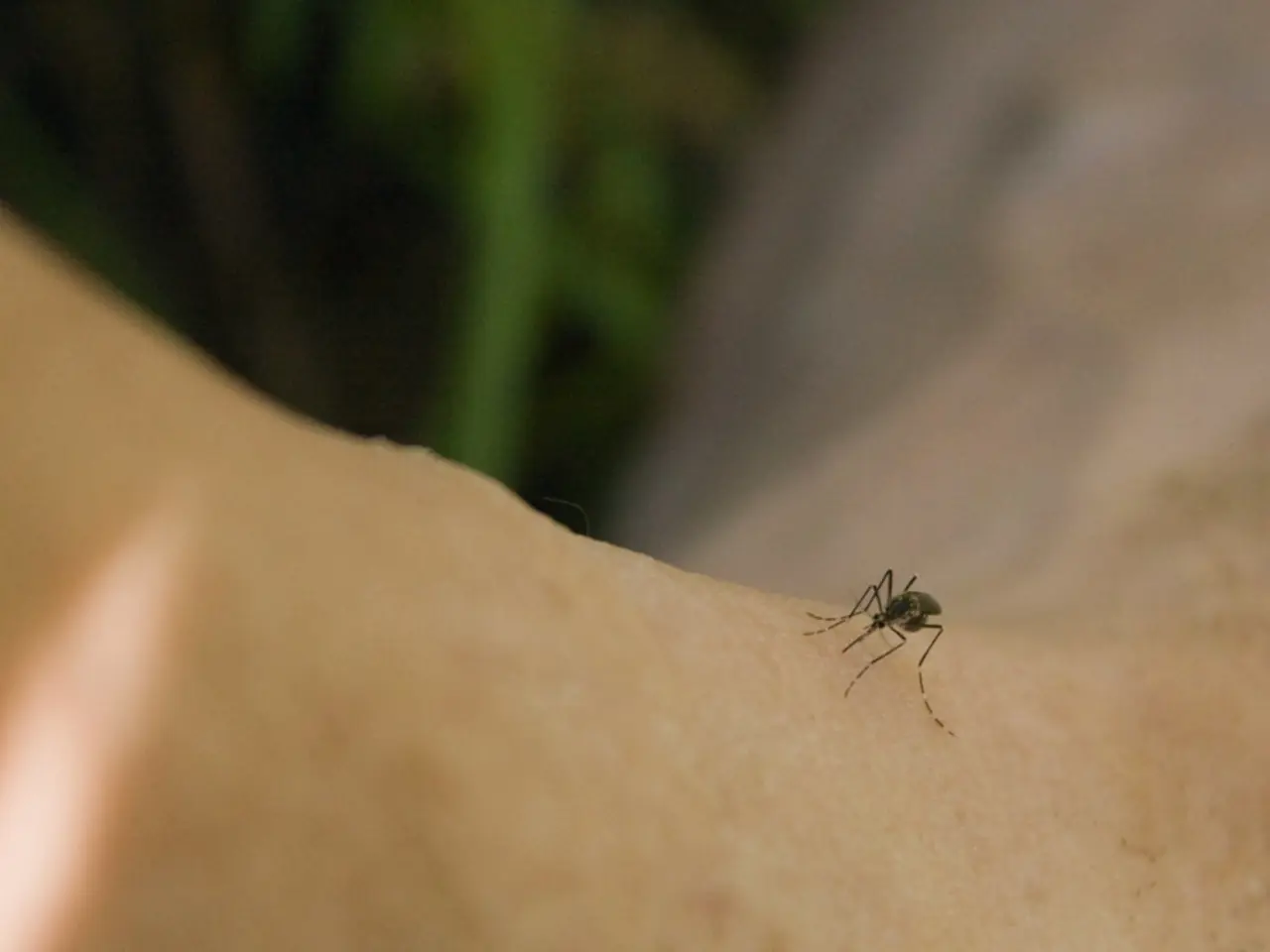Mosquitoes preference for certain individuals could be linked to their blood type, sweating patterns, or alcohol consumption, making some people more appealing to the insects.
In the intricate world of mosquito behavior, a variety of factors contribute to an individual's attractiveness to these tiny, disease-spreading pests. These elements range from genetics and blood type to carbon dioxide output, body heat, skin microbiota, clothing color, alcohol consumption, and exercise.
Genetics play a significant role in determining mosquito attractiveness, with up to 85% of the variability attributed to genetic factors. Genetic differences affect the chemical signals emitted through the skin, such as uric acid and other substances, which mosquitoes use to locate hosts. For example, genetic variation influences whether a person is a "secretor," meaning they secrete certain blood group chemicals via their skin, making them more detectable and attractive to mosquitoes than nonsecretors.
Blood type is another key determinant of mosquito attraction. Studies indicate mosquitoes prefer people with Type O blood, landing on them nearly twice as often as on Type A individuals, with Type B falling in between. Secretors of blood type chemicals are more attractive regardless of blood group. However, some research shows conflicting results, with certain mosquito species showing preference for blood group B or O-negative, highlighting species-specific differences.
Carbon dioxide (CO₂) exhaled by humans is a primary signal attracting mosquitoes from a distance. People producing more CO₂, such as larger individuals or those exercising, are more noticeable to mosquitoes.
Mosquitoes are attracted to body heat, which acts as a close-range cue. Higher skin temperatures can make individuals more visible targets. Exercise increases body heat, enhancing mosquito attraction.
The community of bacteria and other microorganisms on the skin, known as the skin microbiota, affects the composition of body odor, which is critical for mosquito attraction. Variation in skin microbiota, influenced by genetics and environment, changes the chemical profile of sweat, affecting how attractive a person is to mosquitoes.
Though not detailed in the research, it is known from entomological research that darker clothing colors tend to attract mosquitoes visually more than lighter colors, but this factor is generally secondary to chemical cues.
Drinking alcohol, especially beer, has been shown to increase mosquito attraction temporarily. The exact mechanism may involve body odor changes or increased body temperature after alcohol intake. Approximately 20% of individuals are more susceptible to mosquito bites.
Engaging in physical activity increases body temperature and produces substances like lactic acid, uric acid, and ammonia through sweat, making individuals more attractive to mosquitoes.
People more attractive to mosquitoes receive more bites and thus have a higher risk of contracting mosquito-borne diseases like malaria, dengue, and Zika virus. Genetic predisposition and blood type can modify this risk indirectly by influencing attractiveness. Additionally, factors like pregnancy increase attraction, further elevating disease risk for certain groups.
In summary, a complex interplay of genetics, blood chemistry, physiological outputs (CO₂, heat, sweat), skin microbiota, and modifiable lifestyle factors such as exercise and alcohol consumption shape how attractive a person is to mosquitoes and their consequent risk for mosquito-borne illnesses.
Researchers are exploring innovative methods to prevent mosquito bites, such as genetic modification of mosquitoes, skin microbiota manipulation, and the development of advanced repellents.
- Science has delved into understanding the nuances of mosquito behavior, revealing various factors influencing their attraction to humans.
- Despite our advances in genetic research, up to 85% of mosquito attractiveness variability can be attributed to genetic factors.
- Genetic differences impact the chemicals emitted through the skin, acting as a homing beacon for mosquitoes.
- Being a "secretor," a genetic trait where individuals secrete certain blood group chemicals via their skin, makes one more detectable and attractive to mosquitoes.
- Blood type is a significant determinant of mosquito attraction, with Type O blood individuals being favored as targets.
- Studies show mosquitoes land on Type O individuals nearly twice as often as Type A, while Type B falls in between.
- Genetic variation dictates whether a person is a secretor, enhancing overall attractiveness irrespective of blood group.
- Some species of mosquitoes exhibit species-specific preferences, favoring blood group B or O-negative individuals over others.
- Carbon dioxide (CO₂), a primary signal attracting mosquitoes from afar, is exhaled by humans in larger quantities by larger individuals and those exercising.
- Body heat acts as a close-range cue for mosquitoes, making higher-temperature individuals more noticeable targets.
- Exercise increases body heat, thereby boosting mosquito attraction.
- The skin microbiota, a community of bacteria and other microorganisms on the skin, influences the composition of body odor essential for mosquito attraction.
- Skin microbiota variation, influenced by genetics and environment, affects the chemical profile of sweat, playing a role in attractiveness.
- Darker clothing colors tend to attract mosquitoes visually more than lighter colors, although this factor is generally secondary to chemical cues.
- Drinking alcohol, particularly beer, can temporarily increase mosquito attraction by altering body odor or raising body temperature after consumption.
- Approximately 20% of individuals are more susceptible to mosquito bites, potentially due to changes in body chemistry or temperature after alcohol intake.
- Exercise elevates body temperature and induces the production of substances like lactic acid, uric acid, and ammonia, making individuals more attractive to mosquitoes.
- People more attractive to mosquitoes receive more bites and may have a higher risk of contracting mosquito-borne diseases such as malaria, dengue, and Zika virus.
- Genetic predisposition and blood type can indirectly modify this risk by shaping attractiveness.
- Pregnancy increases attraction, further elevating disease risk for certain groups.
- In the realm of health and wellness, understanding mosquito attractiveness can have implications for chronic diseases, cancers, and respiratory conditions.
- With the rise of climate change, the prevalence and transmission of mosquito-borne diseases may evolve, necessitating ongoing scientific study.
- Environmental science is essential in addressing the impact of climate change on mosquito-borne illnesses and potential preventative measures.
- Mental health plays a vital role in coping with the anxiety and uncertainty associated with mosquito-borne diseases and their prevention.
- Mens' and women's health may differ in susceptibility, severity, and response to mosquito bites and resulting diseases.
- Therapies and treatments for mosquito-borne diseases are an integral part of the medical-conditions, chronic-diseases, and electroimmunological-disorders industries.
- In parenting, educating children about mosquito-borne diseases, prevention methods, and personal protection becomes crucial to safeguarding their health and well-being.





